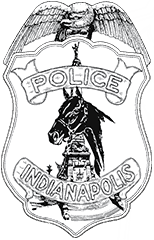Mounted Units increased community policing effectiveness, gather intelligence, and excel in ways officers in cruisers or bikes can’t.
Just having more police officers patrolling a city does not necessarily mean a safer city as measured by crime rates. Research by the National Institute of Justice shows policing without focus doesn’t produce a reduction in crime.
Instead, police departments better serve the public by using directed patrols, proactive arrests, cohesive units, and problem-solving at high-crime hot spots recognized through clear and measurable data. Police officers can prevent robbery, theft, disorder, gun violence, drunkenness, and other violence, but it first requires a strategic and focused approached.

Zsa Zsa White, 9 pets Buzz, the IMPD horse in which Officer Luke Schmitt is mounted on during a protest against republican presidential candidate Donald Trump outside of the Columbia Club on July 12, 2016. ©Jackie Molloy/IndyStar
Mounted Patrol Units generally perform poorly on paper because of comparatively low arrest rates compared to their peers on foot (with or without cruisers), motorcycles, and bicycles. This is because a mounted officer never leaves the horse’s saddle. An officer can perform an arrest, issue a citation, or otherwise perform any other duties, but generally awaits the arrival of a foot patrol officer or squad car to transport a suspect. If a suspect is combative, suspects are detained by being “sandwiched” between horses and officers. For this reason, Mounted Units aren’t often seen as having high arrest or citation rates despite being actively involved in the arrest or citation.
Mounted officers are best used in high-traffic areas. Police horses make for excellent “moving walls” capable of ushering large crowds, or, if necessary, a horse can side-step alongside a single person or small group to separate them. Officers also enjoy a high vantage point up to 10 feet above the vantage of other people or officers. This allows officers to see more people and for more people to see them.
IMPD officers take part in community-policing, which includes four key tenants:
- Neighborhood watch
- Intelligence
- Gathering public information, and
- Ensuring public confidence through police legitimacy.
The Mounted Unit excels at every one of those key tenants. Mounted units are excellent “beacons” to a community. People frequently want to come up to the horses where they otherwise wouldn’t to an individual officer. This allows for better information gathering, intelligence, and increasing public confidence. Where an officer in a car may move through an area so quickly others don’t or can’t notice it, a horse is much more noticeable and likely to be seen. An officer on horseback is as valuable to a situation and the department as 10 officers on foot.
The more accurately an officer can identify and minimize causes of specific patterns of crime, the less crime there will be. Having mounted officers working in conjunction with officers on foot, in cars, and on bikes makes for a safer Indianapolis.



